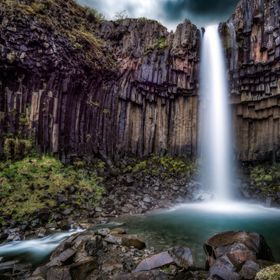

hpd-fotografy
Follow
Spiekeroog is a cozy and very slow-paced (no cars allowed!) island in the North Sea. As is common on the beaches of Northern Germany, the beach loungers look li...
Read more
Spiekeroog is a cozy and very slow-paced (no cars allowed!) island in the North Sea. As is common on the beaches of Northern Germany, the beach loungers look like small houses to protect you against the elements. So you know, the weather usually leaves something to be desired. But not so on this evening. It was sunny and warm and even the wind had died down (well... almost). So the castle-like constructions of the beach chairs looked a bit out of place that night.
Read less
Read less
Views
1010
Likes
Awards
Curator's Choice
Peer Award
Absolute Masterpiece
Top Choice
Superb Composition
Magnificent Capture
Outstanding Creativity
All Star
Superior Skill
Categories
Same photographer See allBehind The Lens
Discover more photos See all
Behind The Lens
Location
This was taken on the north beach of Spiekeroog, one of the German islands in the North Sea. The island is really very lovely, ilargelydue to the fact that there are no cars on the whole islands - very relaxing!Time
I walked all the way to this (very large!) beach and waited for sunset on this unusually quiet evening in early summer. The weather was almost too good and I feared we might have a boring, totally empty blue sky. But fortunately some clouds and mist appeared just in time for the sunset.Lighting
Only available light, of course! No flash. And I used a 10 stop ND filter to get the dreamy feeling of a long exposure despite the strong light from the setting sun.Equipment
This is a long-exposure shot with the Sony A7II mirror-less camera and the Sony-Zeiss 16-35 f/4 wide-angle zoom mounted on a sturdy tripod. I used a 10 stop ND filter to get the dreamy feeling of a long exposure, together with a 2 stop Graduated Density filter to tame the sky.Inspiration
Beach loungers on the German beaches of the North-Sea are built like castles to protect against the (usually) bad weather and strong winds. They look very quaint on any single day - but totally out-of-place on this sunny and warm mellow evening. They looked almost alien. I just had to photograph this.Editing
My post-processing workflow is all about quality and quite involved - especially for such long exposures. I took several long exposures from exactly the same position on the tripod. Starting out with the best possible raw files I used DxO to convert the files into another raw format (.dng) using DxO's very good and gentle noise reduction and lens profile corrections for the particular camera-lens combination. Then I opened all the .dng files in Lightroom and did 90% of the post-processing there, completely nondestructive, everything still in raw, and still working on the individual files - nothing merged yet. After synchronizing all my Lightroom-edits between the individual dng-files, I opened them in Photoshop and merge them together to one file by averaging all the individual light values for each pixel. This averaged file then represents an even longer exposure with much less noise then the individual files. Finally, I did some final touches (like a slight Orton effect, some filters from Nik and Topaz, etc.). Then I saved this as a 16-bit tiff and added it to my Lightroom library. Never, ever do I convert to jpg. A jpg file has only 8 bits of information-depth as compared to the 14 bits I started out with in raw. That is only a tiny fraction, namely 1/64th (or 1.56%) of the information I gathered with the camera (64 is 2 to the power of 6, and 6 is 14-8, the difference in bit-depth between raw and jpg). Therefore, I do not consider jpgs a decent file format worth having in my library. The only time I touch jpg is when I export something to upload to the web.In my camera bag
For over 30 years I have always used Nikon equipment, in the end the mighty D800 and later a D810, the classic Nikon 14-24mm f/2.8 lens and the Nikon 85mm f/1.8 lens, a Nikon D750 and the Nikon 70-200 f/4. But since about 2 years I have sold all this and changed to Sony mirrorless and never looked back. I now have the Sony A7RII and the Sony A7II as cameras, the Sony-Zeiss 16-35 f/4 and 55 f/1.8 lens, the Sony 28 f/2, the 85 f 1.8 and the 70-200 f/4 FE-lenses, and the ultrawide Voigtlaender 10mm f/5.6 VM.Feedback
For long exposure photography in strong light use strong ND filters. Even so, you might not get really long exposure times if the light is really strong. For instance, for this images, the exposure times of the individual shots were only 8 seconds. But not problem: Take several shot and later in post average them all together, effectively constructing a much longer exposure. And one more thing which I cannot stress enough: SHOOT IN RAW! And be careful to never convert to jpg in any step of your workflow! If you do, you throw away over 98% of the information in your raw file and from that moment onward you work with less than 1.6% of your data (but still 100% of the noise)! And for those jpg-shooters out there: You did that already in the very first step of your workflow, i.e. when you shot the picture.












































